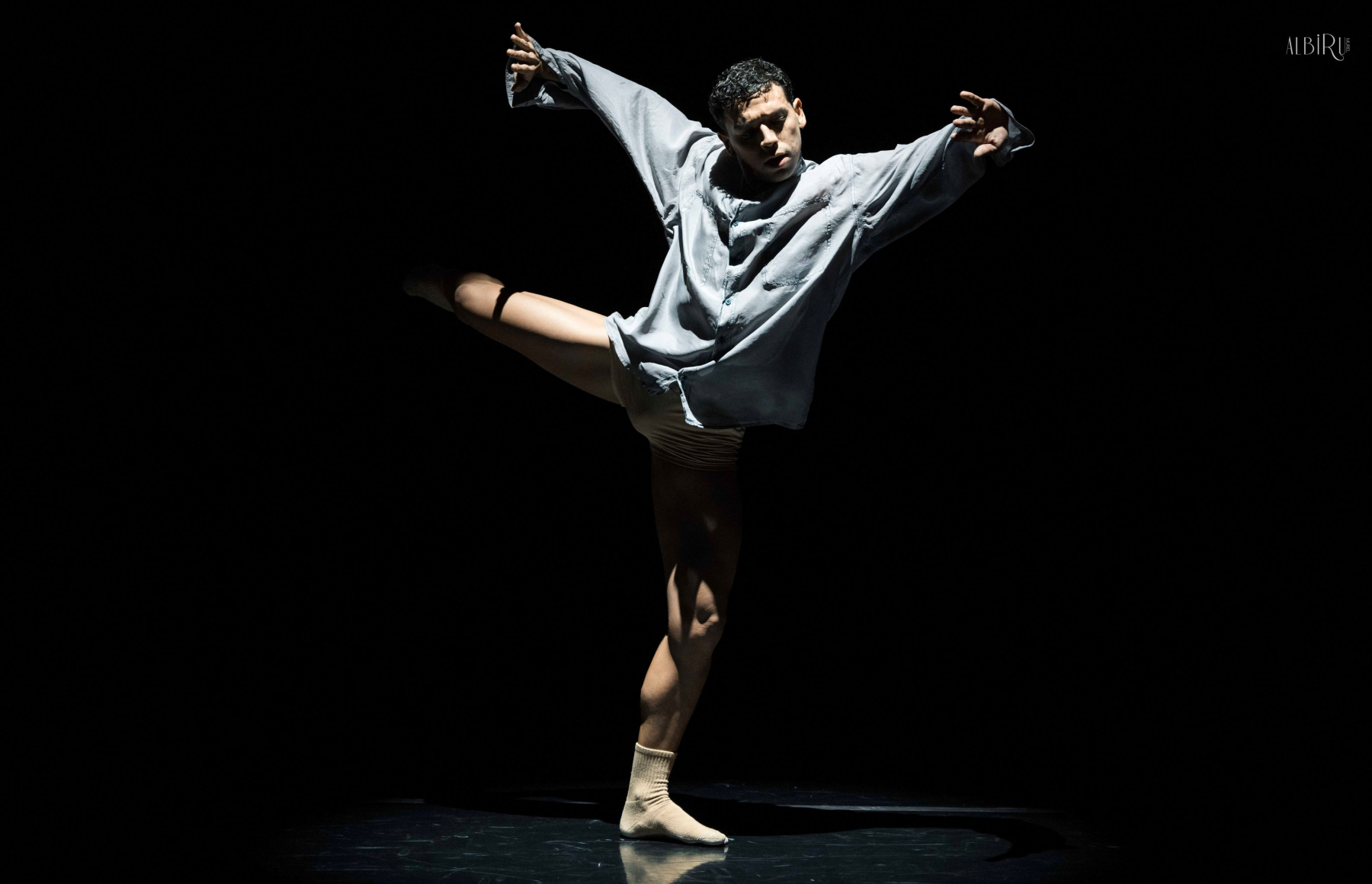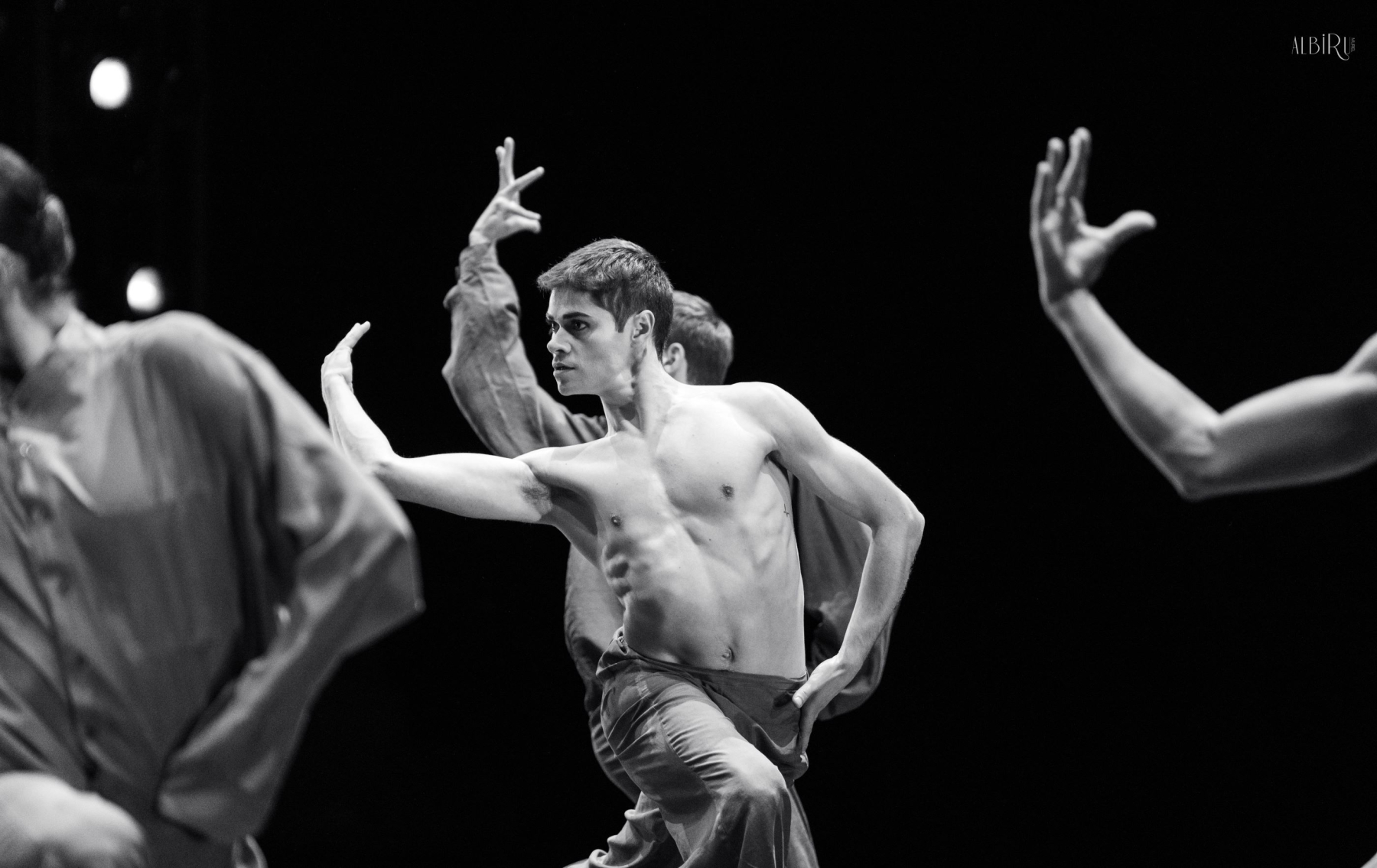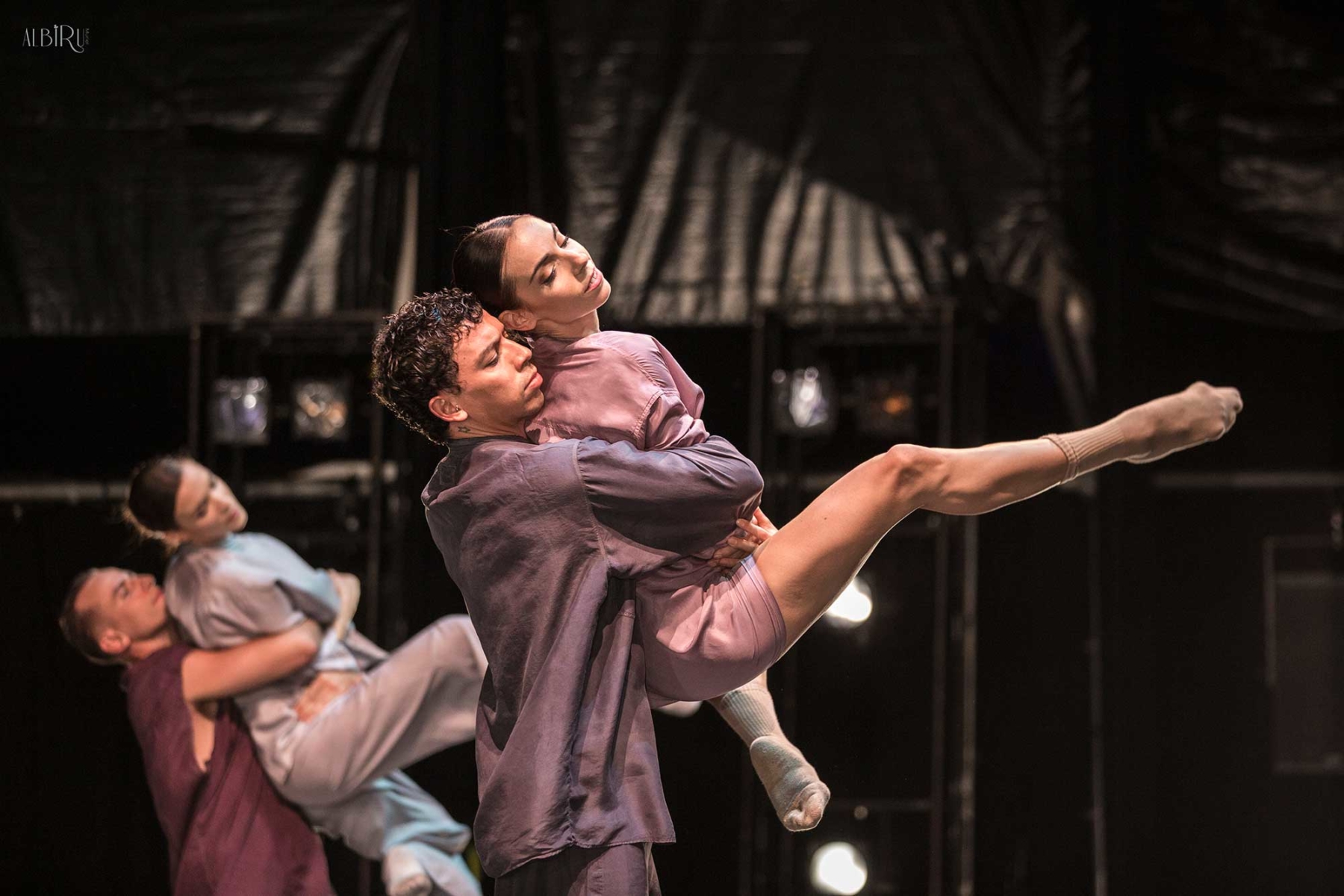Repertoire
Arriaga
With this choreography the CND wants to transmit the emotions of listening again, vibrating and enjoying music through movement.
- World premiere by: Compañía Nacional de Danza at Teatro del Generalife, Granada (España) July, 22nd 2020
The National Dance Company premiered in Granada a choreography with music by Juan Crisóstomo Arriaga from Bilbao, considered the greatest Iberian exponent of late musical classicism, thus paying homage to his figure and his musical work in his short but prolific artistic life.
The musical repertoire selected for the creation of this choreography dates back to 1824, its three string quartets, published by the editor Ph. Petit, highly appreciated by his teacher, Fétis, and by the public. As reflected in the publication Biographie universelle des musiciens et biographie générale de la Musique de Fétis (1834, republished in 1860), Arriaga possessed “the gift of invention and the most complete aptitude for all the difficulties of musical science,” being “it is impossible to imagine anything more original, more elegant or written with greater purity” than his quartets.
The instrumentation of the selected pieces are 2 violins, 1 viola and 1 cello and the selected pieces are: Quartet No. 1 D Minor: III. Menuetto: Allegro-Trio: Più moderato, Varied Theme Op. 17: Andante, Variation 1, 2, 3, 4, 5, 6 and long variation, Quartet No. 1 D Minor: II. Adagio con espressione and Quartet No. 1 D Minor: IV. Adagio-Allegretto.
The central axis of the choreography being the repetition of a melody as a leitmotif in various forms, rhythms and musical tonalities, this will be the vehicle for the movement to adopt various styles, starting from a classical and neoclassical language to reach a language of contemporary movement.
Juan Crisóstomo de Arriaga
Bilbao, 1806 – París, 1826
Bilbao composer (Bilbao, 1806 – Paris, 1826); considered the greatest Iberian exponent of late musical Classicism.
He was born into a family with a musical background, since his maternal grandfather, Miguel Balzola, had already been an organist and piano builder. Also his father, Juan Simón de Arriaga, played the organ in Berriatua (Bizkaia), before working as a “first letters” teacher in Gernika. This pedagogical work was awarded by the Royal Basque Society of Friends of the Country in 1792 and 1793, an unequivocal sign of its affinity with the Enlightenment project. In 1804 Juan Simón moved to Bilbao to take up a position as a notary, and there he would also prosper as a merchant and shipowner. Apparently, another son of his, Ramón Prudencio, was equally skilled guitarist and violinist.
The details of the early training of Juan Crisóstomo, who grew up between Somera and Ronda streets in the Casco Viejo, are unknown. In addition to the foreseeable paternal influence, he is supposed to be a student of Fausto Sanz, violinist in the Basilica of Santiago. According to all indications, his musical talent must have stood out from a very young age in halls and local philharmonic meetings. At the age of eleven he composed a triplet known as Nada y mucho (converted into an octet a century later), before signing his Overture for nonet, from 1818, as “Opus 1”. A year later he worked on The Happy Slaves (1819), semi-serious opera based on a text by Francisco Comella, of which only its overture remains complete. During this stage he also wrote some liberal patriotic hymns and marches along with instrumental pieces for strings or piano, as well as a Stabat Mater (c. 1821), possibly destined for the Bilbao musical chapel.
Encouraged by the praise of personalities such as José Sobejano, chapel master in Bilbao, the tenor Manuel García and the violinist Francesco Maria Vaccari, he moved to Paris in 1821. There he would study official studies in Harmony and Counterpoint with François-Joseph Fétis, and violin with Pierre Baillot. In 1823, after obtaining 2nd Prize in the annual Counterpoint and Fugue competition of the Conservatory, he was appointed assistant in Fétis’ classes. A year later, the editor Ph. Petit published his three String Quartets, highly appreciated by his teacher. His production expanded with the development of a Symphony “for large orchestra”, new religious works (his missing Fugue at 8 on a phrase from the Creed was described, apparently, as a “masterpiece” by the director of the Conservatory, Luigi Cherubini). , and several cantatas and secular arias. In Paris he also reviewed some of his Bilbao creations and became friends with the Riojan pianist Pedro Albéniz.
Mar Aguiló
In the midst of such intense activity, Arriaga died of a lung condition, a few days before his twentieth birthday. With this, not only was the career of the most prodigious and precocious Basque musical talent cut short, when he was already showing signs of romantic maturity, but also the early reception of his work, both in France and Spain.
The publication of a laudatory review in Fétis’ Biographie universelle des musiciens et biographie générale de la Musique (1834, republished in 1860) was the first step in rescuing his figure from oblivion. According to this reference author, his ill-fated disciple possessed “the gift of invention and the most complete aptitude for all the difficulties of [musical] science,” and “it is impossible to imagine anything more original, more elegant, or written with greater purity” than his quartets. Since the last decades of the century, his great-nephew Emiliano de Arriaga championed the efforts to recover his legacy, turning the musician into a true icon and myth of his hometown; with the support, among others, of the publisher Louis Dotesio and the Bilbao Quartet Society, created in 1884. At that time (1886) Emilio Arrieta coined the repeated nickname of “Spanish Mozart” to evoke his creative genius. This movement led to the institution of a “Permanent Commission” (1887) that ensured the vindication and dissemination of its production. After the celebration of the centenary of his birth, in 1906, the artist Francisco Durrio was entrusted with the execution of a public monument in his memory, which would not be inaugurated until 1933. Both the music conservatory and the first theater in Bilbao still bear the name of the author today.
Musical works: Nada y mucho; Los esclavos felices; Tema variado en cuarteto; Variaciones sobre el tema de ‘La Húngara’; Stabat Mater; Tres Estudios (Caprichos) y una Romanza para piano; Tres Cuartetos de cuerda; Ouverture pastorale; Sinfonía en re; Salve Regina; Misa à 4; Medée; Ma tante Aurora; Oedipo à Colonne; Herminie; Agar dans le désert; among others fragments and missing pieces.
MARIO LERENA (BILBAOPEDIA)
Información
-
Choreography:Mar Aguiló, Pino Alosa y Joaquín De Luz
-
Music:Juan Crisóstomo Arriaga - Cuarteto nº 1 en D Minor: III. Menuetto: Allegro-Trio: Più moderato Tema variado Op. 17: Andante, Variation 1, 2, 3, 4, 5, 6 y variation largo Cuarteto nº 1 D Minor: II. Adagio con espressione Cuarteto nº 1 D Minor: IV. Adagio-Allegretto
-
Costume assistant:Andrea Pimentel
-
Lighting Design:Mar Aguiló, Pino Alosa and Joaquín De Luz (with the technical support of the CND lighting staff)
-
Costume dying:María Calderón
-
Running time:30 minutes
-
Premiere cast:Kayoko Everhart, Haruhi Otani, Ana Calderón, Elisabet Biosca, Sara Fernández, Laura Pérez Hierro, Giada Rossi, Shani Peretz, Irene Ureña, Ana Pérez-Nievas, María Muñoz, Yanier Gómez, Shlomi Shlomo Miara, Daan Vervoort, Alessandro Riga, Ion Agirretxe, Juan José Carazo, Álvaro Madrigal, Isaac Montllor, Erez Ilan, Iker Rodríguez
















